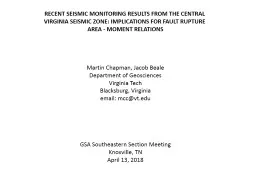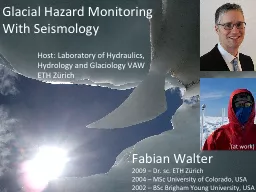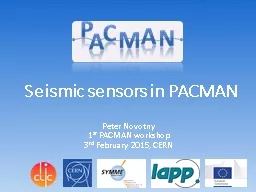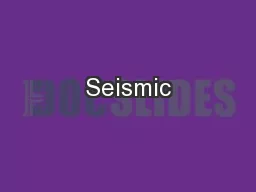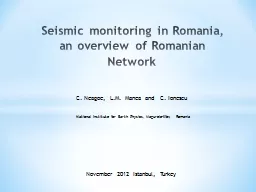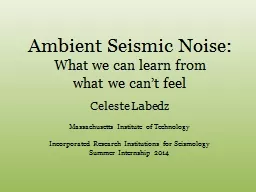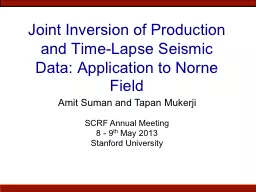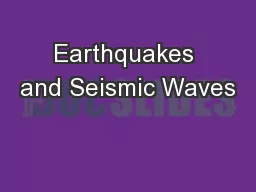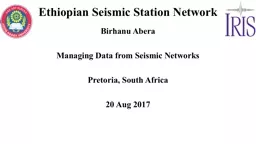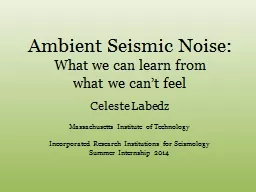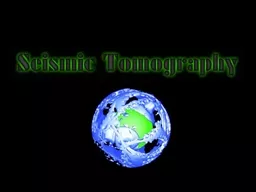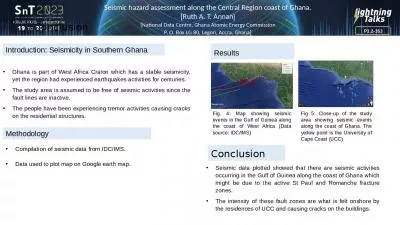PPT-RECENT SEISMIC MONITORING RESULTS FROM THE CENTRAL
Author : trish-goza | Published Date : 2018-11-02
VIRGINIA SEISMIC ZONE IMPLICATIONS FOR FAULT RUPTURE AREA MOMENT RELATIONS Martin Chapman Jacob Beale Department of Geosciences Virginia Tech Blacksburg Virginia
Presentation Embed Code
Download Presentation
Download Presentation The PPT/PDF document "RECENT SEISMIC MONITORING RESULTS FROM T..." is the property of its rightful owner. Permission is granted to download and print the materials on this website for personal, non-commercial use only, and to display it on your personal computer provided you do not modify the materials and that you retain all copyright notices contained in the materials. By downloading content from our website, you accept the terms of this agreement.
RECENT SEISMIC MONITORING RESULTS FROM THE CENTRAL: Transcript
Download Rules Of Document
"RECENT SEISMIC MONITORING RESULTS FROM THE CENTRAL"The content belongs to its owner. You may download and print it for personal use, without modification, and keep all copyright notices. By downloading, you agree to these terms.
Related Documents

